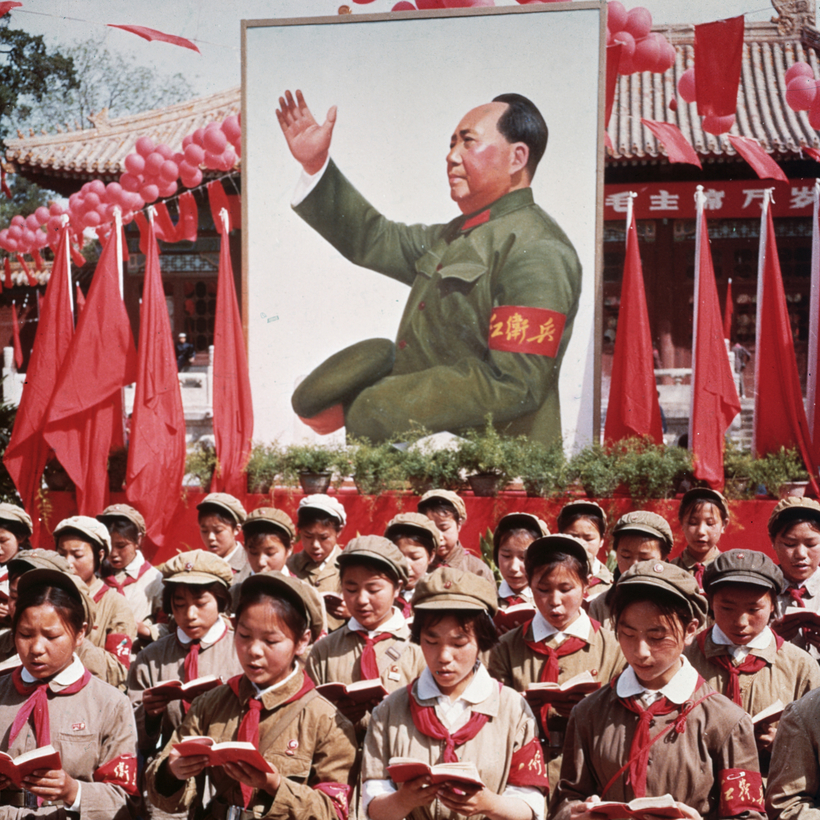When Tania Branigan moved to Beijing, as a correspondent for The Guardian, the city was getting ready to host the 2008 Olympics. Bulldozers prowled the streets, razing old homes and shops. On her way home from work, Branigan would often find that a building in her neighborhood had been torn down, or that a park had come up overnight next to a pile of rubble.
She sensed an arbitrariness in every decision, something she also detected in the labyrinthine secrecy of China’s political landscape. Years ago, Mao might have enjoyed spouting aphorisms to the occasional visiting journalist, but a decade into the new millennium, Branigan had a grueling time eliciting boilerplate responses from government officials in Beijing.
In Red Memory, Branigan’s absorbing study of the legacy of the Cultural Revolution, she writes that well before Xi Jinping came to power, in 2012, the idea of a Chinese leader sitting down for an interview with a foreign reporter was “unthinkable”: “Here, we toiled for crumbs from a distant table.”
“I began to sense the Cultural Revolution in almost every subject I covered,” Branigan writes. Yet Chinese citizens still speak of that violent decade, from the mid-60s onward, in hushed tones. The memoirs and diaries she read from that period—the “scar literature” that briefly flourished in China during the early 80s—glossed over the traumatic parts: they felt like more crumbs from a table. “When people who are very close meet,” a former Red Guard told Branigan, “they sometimes talk about it among themselves.” It was almost as if the entire country had been coerced to forget those years, or at least to keep the more shameful details a secret.
“I began to sense the Cultural Revolution in almost every subject I covered.”
This collective reticence is partly an outcome of the haziness about the beginnings of the turmoil. Mao had, in fact, initiated a campaign to purge his detractors from the Communist Party back in 1962, even though the May 16 “Notification of 1966,” which famously denounced “counter-revolutionary revisionists” within the party, marks the formal proclamation of the uprising.
Schoolkids and adolescents signed up for the Red Guards, mostly out of deference to Mao, but also to indulge their sadistic instincts. Branigan correctly notes that “children were enlisted to carry out the work for which adults were, at first, too squeamish.”
Street squares and university campuses became sites for “struggle sessions,” where supposed class enemies—teachers, intellectuals, shopkeepers, landlords, and later, members of rival factions of the Red Guards—were humiliated, beaten up, lynched, and frequently driven to suicide. Liu Shaoqi and Deng Xiaoping, two leaders seen as Mao’s successors in the party, were vilified and attacked. More than 1,700 people died in Beijing alone during Red August in 1966—and that’s just one month in one city.
Forty years on, Branigan meets up with those still processing the clamor: a middle-aged blogger who remembers campaigning for “red terror” as a schoolgirl and once glimpsing a basketball court littered with corpses; a son who as a teenager had denounced his mother for criticizing Mao, after which she was arrested and executed.
You can’t help but feel a chill when Wang Xilin, a composer who was tortured and whisked away to a labor camp in Shanxi, tells Branigan that the anticipation of having one’s name called out during a struggle session was the worst: “Even now, when someone calls out ‘Wang Xilin!’ in the street, I still have the same reaction.” An ex–Red Guard admits to burying dozens of corpses during the height of the factional wars: “I was a helpful person and not afraid of hard work.”
Branigan deftly connects these oral histories to more recent troubles. In the aftermath of a devastating earthquake in Szechuan, for instance, she reports that the government expended all its energies crushing protests against dodgy construction practices in the region, instead of honestly reckoning with the tragedy.
It was almost as if the entire country had been coerced to forget those years, or at least to keep the more shameful details a secret.
Xi, too, was separated from his parents and exiled to a village in northwestern China at 15, but over the years he has repackaged his ordeal in speeches and memoirs as a foundational phase, and he now warns against the dangers of “historical nihilism.” Apologies for the period’s excesses have been half hearted at best: the Communist Party did accept in 1981 that the revolution was a “catastrophe,” but it stopped well short of condemning Mao.
Branigan travels to a handful of neglected memorials built at a careful distance from the tourist trail and frequently closed to the public. Elsewhere, she runs into Mao cosplayers and dines at Cultural Revolution–themed restaurants where waitresses serve the clientele in Red Guard uniforms and professional dancers climb onto chairs at intervals and chant, “Long live Chairman Mao.”
She picks up on a stubborn nostalgia for those blood-soaked days, be it among liberals who secretly believe that China is “not ready to be free” or a cross section of the elderly urban population, banished to the countryside in their teens and 20s, who now yearn for a time when income disparities weren’t so stark and everyone seemed to be partaking in a common cause.
By the time Branigan exited the country, months before the 50th anniversary of the revolution, intellectuals and activists were again being targeted by the Xi regime. Since then, he has abolished the two-term limit for Chinese presidents and doubled down on the repression. In Xinjiang, more than an estimated million Uighur Muslims have been imprisoned in detention camps. The country’s reckless response to the pandemic confirmed many citizens’ worst fears. In China, the Cultural Revolution never ended.

Abhrajyoti Chakraborty is a New Delhi–based writer and critic

